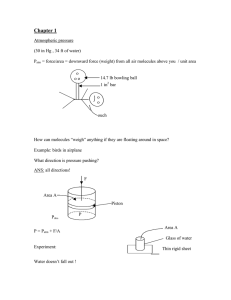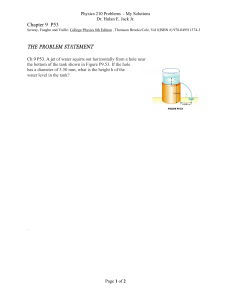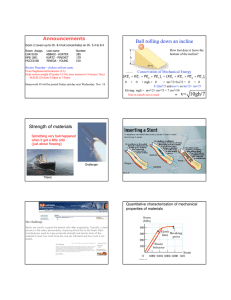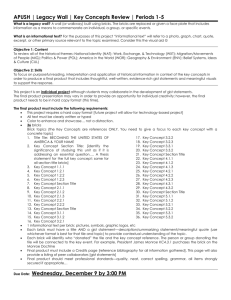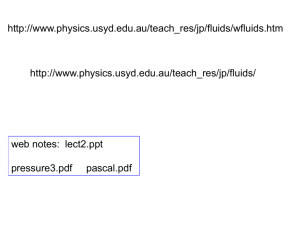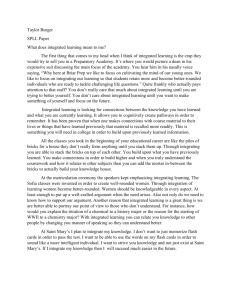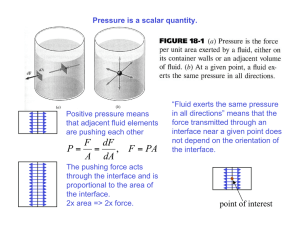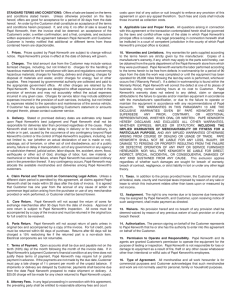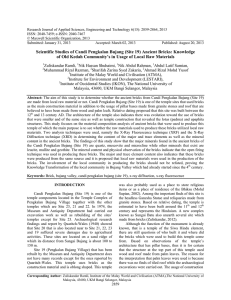PHY 2053, Section 3438, Spring 2009, Quiz 10
advertisement
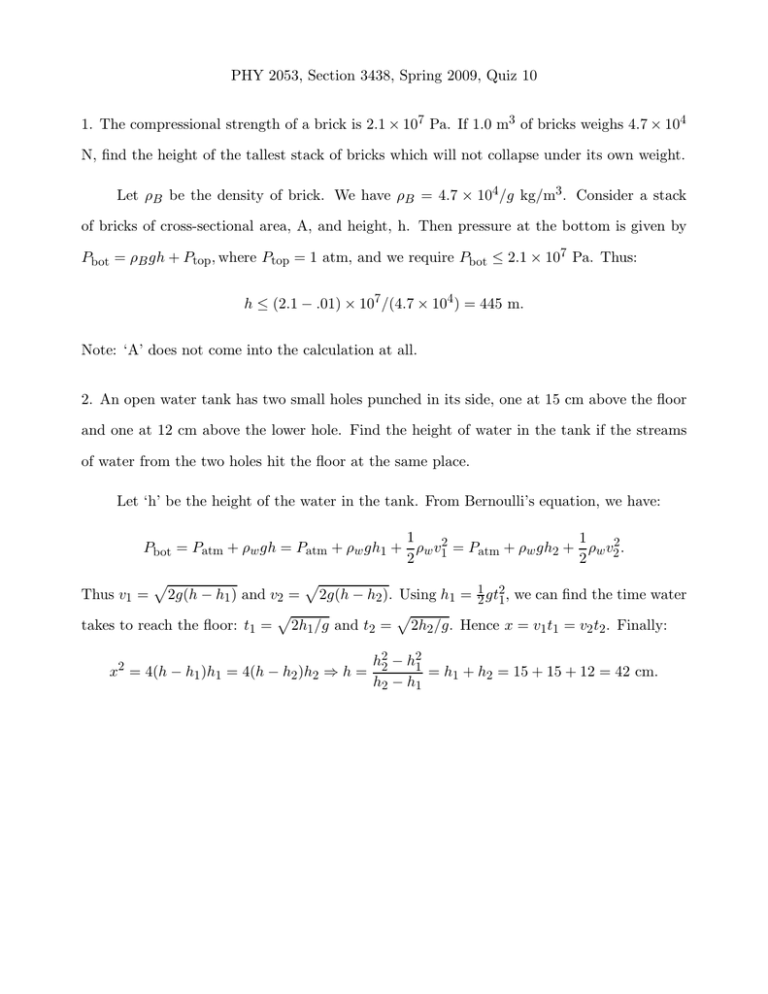
PHY 2053, Section 3438, Spring 2009, Quiz 10 1. The compressional strength of a brick is 2.1 × 107 Pa. If 1.0 m3 of bricks weighs 4.7 × 104 N, find the height of the tallest stack of bricks which will not collapse under its own weight. Let ρB be the density of brick. We have ρB = 4.7 × 104 /g kg/m3 . Consider a stack of bricks of cross-sectional area, A, and height, h. Then pressure at the bottom is given by Pbot = ρB gh + Ptop , where Ptop = 1 atm, and we require Pbot ≤ 2.1 × 107 Pa. Thus: h ≤ (2.1 − .01) × 107 /(4.7 × 104 ) = 445 m. Note: ‘A’ does not come into the calculation at all. 2. An open water tank has two small holes punched in its side, one at 15 cm above the floor and one at 12 cm above the lower hole. Find the height of water in the tank if the streams of water from the two holes hit the floor at the same place. Let ‘h’ be the height of the water in the tank. From Bernoulli’s equation, we have: 1 1 Pbot = Patm + ρw gh = Patm + ρw gh1 + ρw v12 = Patm + ρw gh2 + ρw v22 . 2 2 p p 2g(h − h1 ) and v2 = 2g(h − h2 ). Using h1 = 12 gt21, we can find the time water p p takes to reach the floor: t1 = 2h1 /g and t2 = 2h2 /g. Hence x = v1 t1 = v2 t2 . Finally: Thus v1 = h2 − h21 x2 = 4(h − h1 )h1 = 4(h − h2 )h2 ⇒ h = 2 = h1 + h2 = 15 + 15 + 12 = 42 cm. h2 − h1
